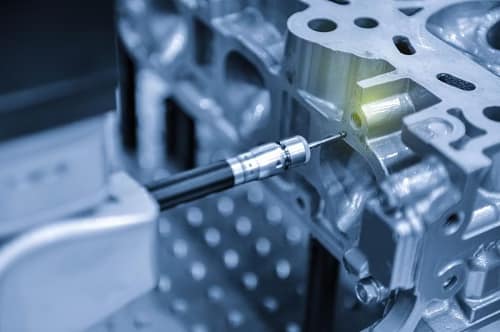Introduction: Understanding the Core of Injection Molding
In the world of manufacturing, precision and efficiency are key, and one process that epitomizes both is injection molding. From the plastic components in everyday products to high-tech parts used in advanced machinery, injection molding plays a critical role. But what exactly makes this technique so powerful, and why should you care about it?
This article delves deep into the world of injection molding, exploring its fundamentals, applications, and why it is often the go-to solution for mass production of high-quality, complex parts.
What is Injection Molding?
At its core, injection molding is a manufacturing process where material (usually plastic) is melted and injected into a mold to create a specific shape. This mold is designed with extreme precision to meet exact specifications, ensuring the final product is accurate, strong, and durable. The process is typically used for producing large quantities of the same item, making it ideal for industries that demand consistency and efficiency.
The process begins with the raw material, often plastic pellets, which are fed into a heated barrel. The material is then melted and forced into a mold under high pressure. After the mold cools and solidifies, the newly formed component is ejected, ready for inspection and, eventually, assembly. While this description is basic, the intricacies of the technique are what make it a cornerstone of modern manufacturing.
Why Choose Injection Molding?
- Efficiency and Scalability: One of the most compelling reasons for manufacturers to choose injection molding is the ability to scale production. Once a mold is created, producing additional parts is relatively inexpensive. In fact, the per-unit cost decreases significantly as production volume increases. This makes injection molding the preferred choice for mass production of small to medium-sized plastic components.
- Design Flexibility: Injection molding allows for highly complex and intricate designs that would be difficult or impossible to achieve with other manufacturing methods. The process is capable of producing parts with thin walls, detailed textures, and intricate features—all without compromising strength or quality.
- Material Versatility: While plastic is the most common material used in injection molding, it’s also possible to mold a wide variety of other materials, including metals, ceramics, and composites. This gives manufacturers the flexibility to choose the right material based on the specific requirements of their product.
- Speed: The injection molding process is incredibly fast, especially once the mold is set. Cycle times can be as short as 15 seconds, which means large quantities of products can be produced in a relatively short amount of time.
- Cost-Effectiveness: The initial cost of developing a mold can be high, but once the mold is ready, production costs drop significantly. This makes injection molding a cost-effective method for large-scale production runs.
Applications of Injection Molding in Industry
The versatility of injection molding makes it a go-to solution for many industries. Here are a few examples:
- Automotive Industry: From dashboards to door panels, automotive manufacturers use injection molding to produce a wide range of parts that need to be durable, lightweight, and cost-effective. The ability to produce these parts quickly and in large quantities makes injection molding indispensable to the automotive supply chain.
- Consumer Electronics: The delicate internal components of your favorite smartphone or laptop are likely produced using injection molding. From casings to connectors, injection molding provides the precision and consistency needed for electronics that function reliably.
- Medical Devices: The medical industry relies heavily on injection molding for producing sterile, precise parts for devices like syringes, diagnostic equipment, and surgical instruments. The need for high precision and the ability to handle bio-compatible materials makes injection molding ideal for this sector.
- Packaging: Injection molding is also widely used in the packaging industry to produce everything from bottles to caps to containers. This process allows for high-volume production of lightweight, durable packaging solutions that can be customized in terms of shape, size, and color.
The Future of Injection Molding
As technology advances, so too does the injection molding process. Innovations like 3D printing for mold creation, new materials, and enhanced precision technologies are pushing the boundaries of what’s possible with injection molding. Industries are beginning to explore hybrid solutions, combining injection molding with other advanced manufacturing techniques to create parts that were previously unimaginable.
The future of injection molding looks bright, with continual advancements ensuring that this process remains an essential part of modern manufacturing. As industries evolve, so too will the applications for injection molding, further cementing its place in the heart of manufacturing innovation.

Conclusion: Embracing Injection Molding for a More Efficient Tomorrow
Whether you’re producing small consumer electronics, large automotive parts, or intricate medical devices, injection molding offers unmatched precision, speed, and cost-effectiveness. Its ability to scale production while maintaining high-quality standards makes it a go-to solution for industries worldwide.
The next time you encounter a plastic component or a precision-engineered part, remember that injection molding is likely the process that made it possible. By harnessing the power of injection molding, industries can meet the growing demands of a fast-paced world while delivering high-quality, reliable products to consumers around the globe.